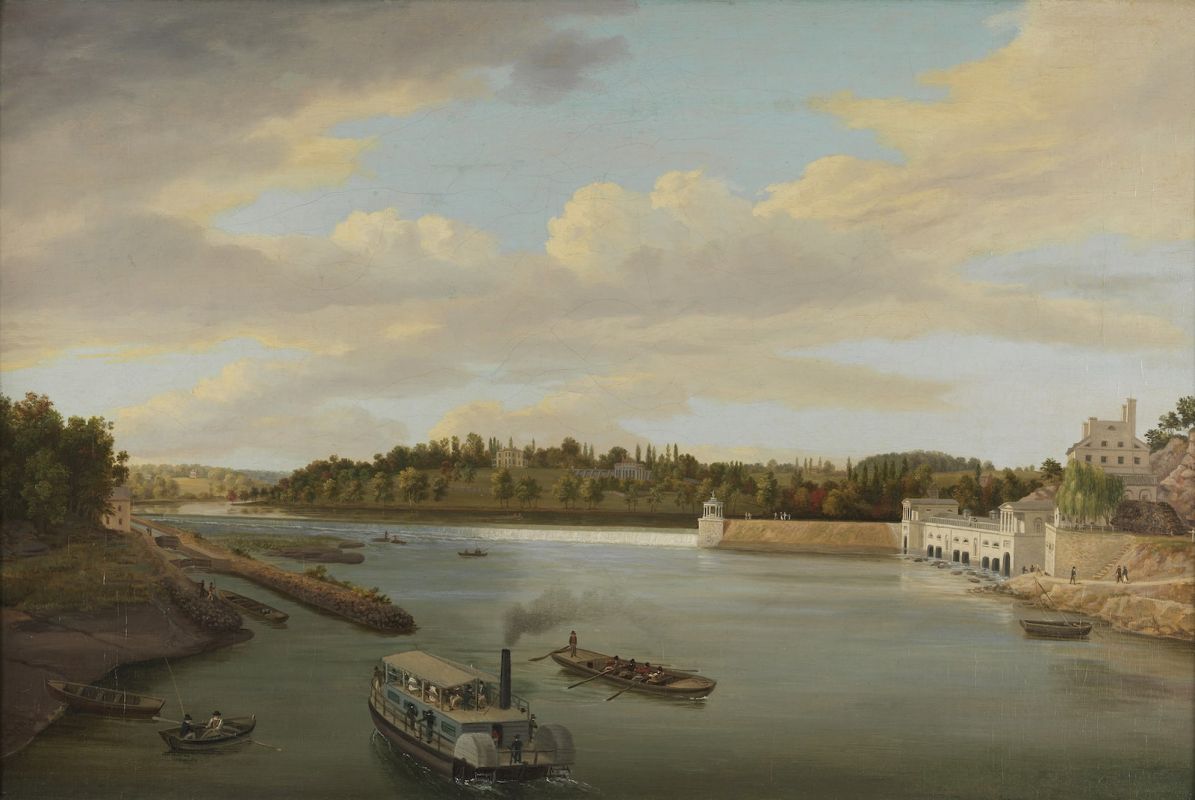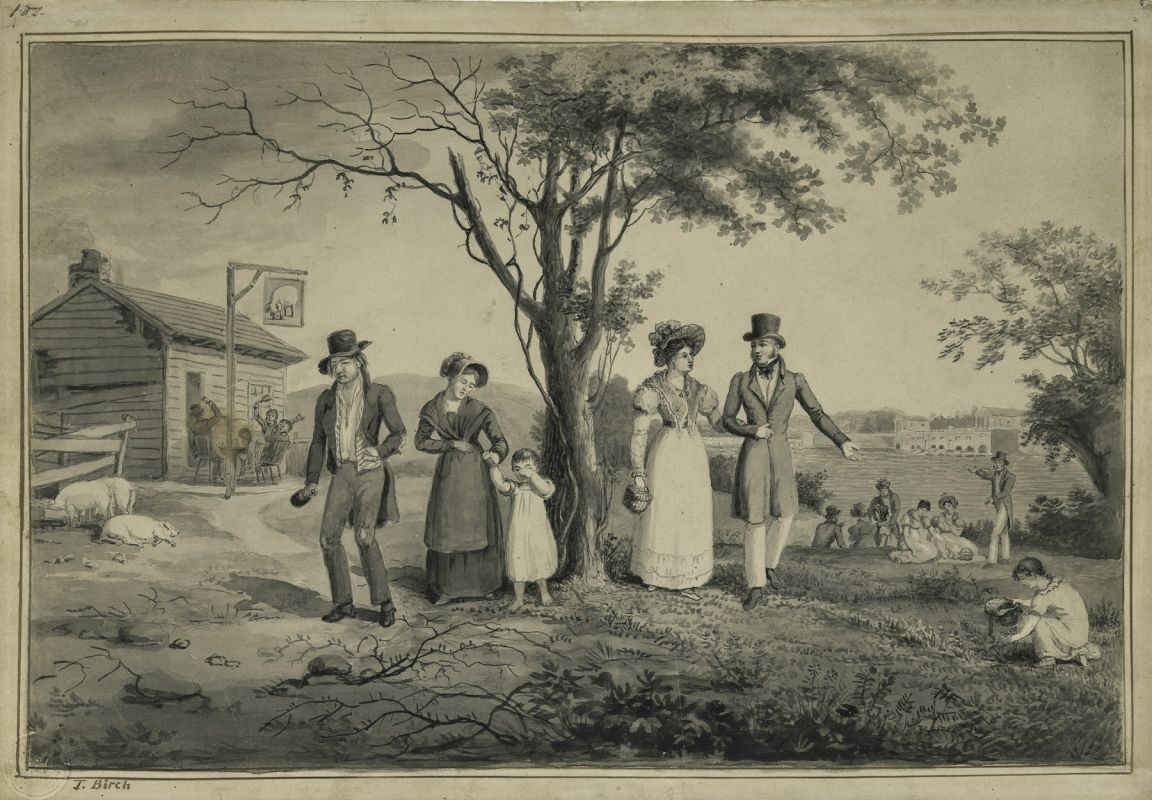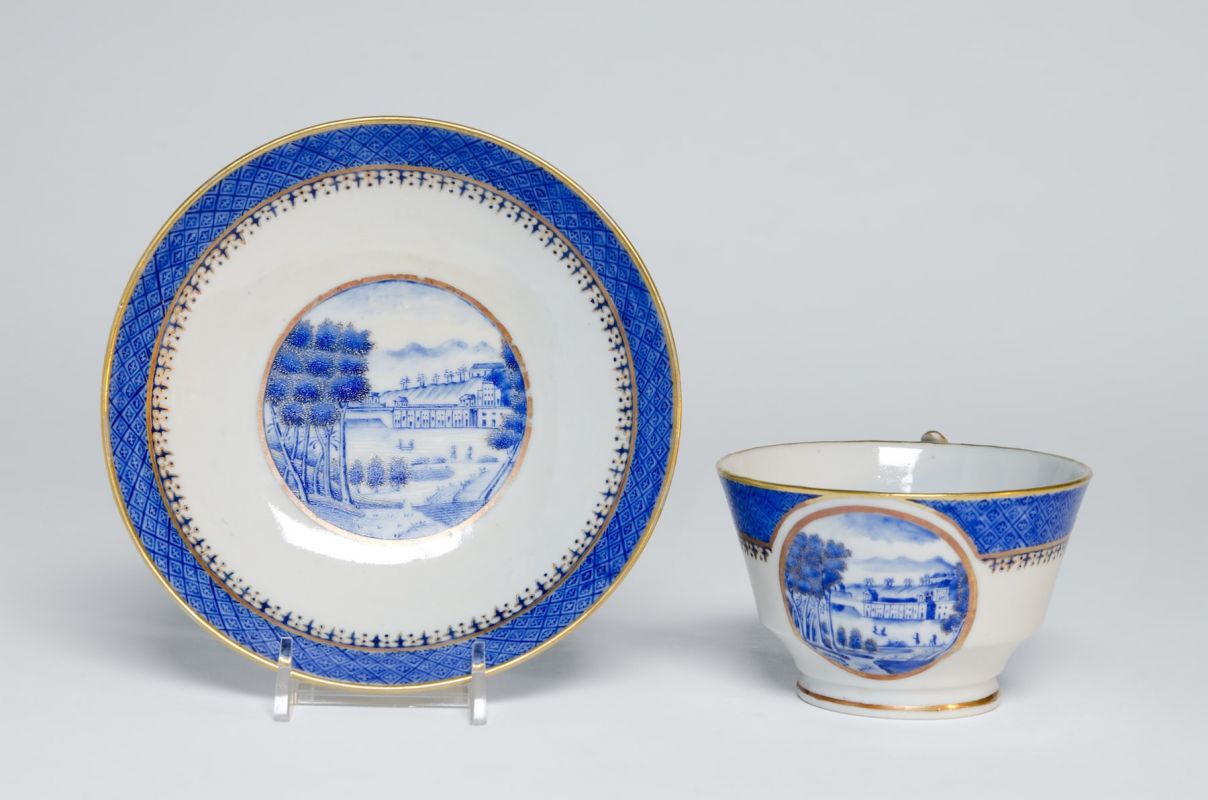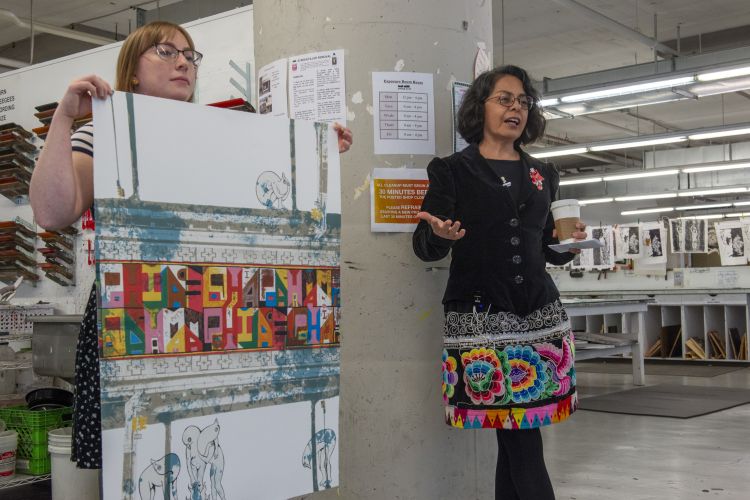STORIES FROM PAFA
Celebrating Philadelphia's Water Technology Through Art
When Philadelphians turn on their faucets and drink a glass of water, they’re drinking water from the Schuylkill and Delaware rivers.
It’s not as simple as taking a sip from the Schuylkill in Manayunk, but Philadelphia has been making sure its citizens have clean water since the early 1800s. The city was a pioneer for clean water for large cities.
“Philadelphia’s Water Works was a technological wonder of the world. In the 1840s Charles Dickens came to Philadelphia so he could see the Water Works,” said Dr. Anna O. Marley, PAFA’s Curator of Historical American Art. “Even the pumphouse, which was built on Center Square where City Hall now stands, was designed by the same person who did the United States Capitol.”
On view this summer at PAFA, From the Schuylkill to the Hudson: Landscapes of the Early American Republic is in part a celebration of Philadelphia’s roots as a modern city and its place on the world stage in the 19th century.
Marley said Philadelphians saw the importance of clean water during the Yellow Fever Epidemic in 1793. The Fairmount Water Works, opened in 1815, was the sole pumping station for the city and ensured residents had access to clean drinking water.
City officials used art to promote the clean water initiative locally and around the world. Thomas Birch’s Fairmount Water Works (1821), which will be on view during Schuylkill to Hudson, showcases the beauty and cleanliness of the Schuylkill River.
Thomas Birch’s Virtue and Vice, Sobriety and Drunkenness (1815-1830), on loan from the Winterthur Museum in Delaware, simultaneously portrays what life looks like with and without clean water. One side of a "sobriety tree" is displayed in full bloom alongside a happy, healthy family, and the Schuylkill River in the background. On the other side, the tree's branches are bare, with the same family seen upset and crying, as spirits are being drunk at a tavern in the background.
“Everyone wanted to make Philadelphia a healthy city,” Marley said. “So these images of the Schuylkill were meant to convey the city’s healthfulness and reassure people that they won’t keep dying of yellow fever.”
Artists of the time period not only shared the good condition of Philadelphia’s water system and picturesque setting but also participated in creating the infrastructure for Philadelphia’s clean water.
Many may think of the idea of an artist/activist as a modern notion but civic-minded and engaged artists go as far back as the country’s founding.
PAFA was established in 1805, and several of its co-founders, like William Rush and Charles Willson Peale, were on the Watering Committee for Philadelphia. The Watering Committee helped establish the Fairmount Water Works.
“These artists were involved in the civic creation of the water system in this city,” said Marley.
On a global level, Philadelphia in the early 1800s was a symbol of American wealth and power. Philadelphia was one of the largest port cities in the newly formed country.
A cup and saucer showing the Philadelphia Water Works (1825, on loan from the Philadelphia Museum of Art), was painted in China and exported to the US.
“The Waterworks made Philadelphia a symbol of a modern American city,” Marley said. “With technology, you could have water that could be contained but also safe, salubrious, and healthy. It was a really important image for the city.”
Opening this summer at PAFA, Schuykill to Hudson will place special emphasis on representations of local waterways in order to showcase the manner in which these Philadelphia water views, whether of the Schuylkill, Wissahickon, or Delaware, constituted some of the earliest and most influential sites within American visual culture.
From the Schuylkill to the Hudson: Landscapes of the Early American Republic opens June 29, 2019 and runs through December 29th.
We're so excited you're planning to visit PAFA!
Make time for art — visit us Thursday to Sunday.
Before reserving your tickets, please review helpful information about museum hours, accessibility, building access, and special admission programs.
If you have any questions, feel free to reach out to us at visitorservices@pafa.org — we’d love to help!






